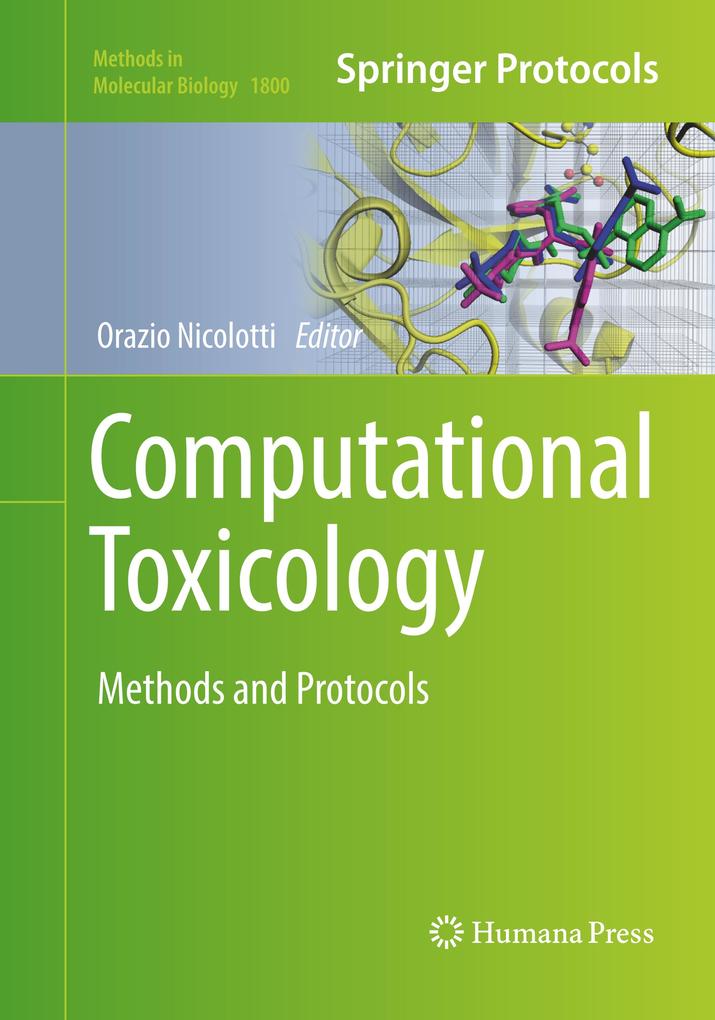This volume explores techniques that are currently used to understand solid target-specific models in computational toxicology. The chapters are divided into four sections and discuss topics such as molecular descriptors, QSAR and read-across; molecular and data modeling techniques to comply with both scientific and regulatory sides; computational toxicology in drug discovery; and strategies on how to predict various human-health toxicology endpoints. Written in the highly successful Methods in Molecular Biology series format, chapters include introductions to their respective topics, lists of the methods and software tools used, step-by-step, readily reproducible computational protocols, and tips on troubleshooting and avoiding known pitfalls.
Comprehensive and cutting-edge, Computational Toxicology: Methods and Protocols is a valuable resource for researchers who are interested in learning more about this expanding field.
Inhaltsverzeichnis
Molecular Descriptors For Structure-Activity Applications: A Hands-On Approach. - The OECD QSAR Toolbox Starts Its Second Decade. - QSAR: What Else? . - (Q)SARs as Adaptations to REACH Information Requirements. - Machine Learning Methods In Computational Toxicology. - Applicability Domain: A Step Toward Confident Predictions And Decidability for QSAR Modeling. - Molecular Similarity In Computational Toxicology. - Molecular Docking for Predictive Toxicology. - Criteria and Application on the use of Non-Testing Methods within a Weight of Evidence Strategy. - Characterization and Management of Uncertainties in Toxicological Risk Assessment: Examples from the Opinions of the European Food Safety Authority. - Computational Toxicology and Drug Discovery. - Approaching Pharmacological Space: Events and Components. - Computational Toxicology Methods in Chemical Library Design and High-Throughput Screening Hit Validation. - Enalos Suite:New Cheminformatics Platform for Drug Discovery and Computational Toxicology. - Ion Channels In Drug Discovery and Safety Pharmacology. - Computational Approaches in Multi-Target Drug Discovery. - Nano-Formulations for Drug Delivery: Safety, Toxicity, and Efficacy. - Toxicity Potential Of Nutraceuticals. - Impact of Pharmaceuticals on the Environment: Risk Assessment using QSAR Modeling Approach. - (Q)SAR Methods for Predicting Genotoxicity and Carcinogenicity: Scientific Rationale and Regulatory Frameworks. - Stem Cell-Based Methods to Predict Developmental Chemical Toxicity. - Predicting Chemically-Induced Skin Sensitisation by using In Chemico/In Vitro Methods. - Hepatotoxicity Prediction by Systems Biology Modeling of Disturbed Metabolic Pathways using Gene Expression Data. - Non-Test Methods to Predict Acute Toxicity: State of Art for Applications of In Silico Methods. - Predictive Systems Toxicology. - Chemoinformatic Approach to Assess Toxicity of Ionic Liquids. - Prediction of Biochemical Endpoints by the CORAL Software: Prejudices, Paradoxes, and Results.
